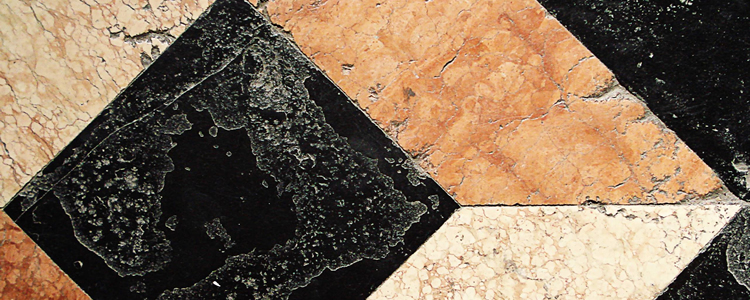
Over time, natural stone loses its luster due to use, abuse, and damaging cleaning methods. It is common for all types of stone flooring to collect soil that is difficult to remove. Vinegar and water or other harsh cleaning methods leave cloudy, etched floors. Below we offer some stone care tips and recommendations for keeping your natural stone floors and countertops looking their best.
Know Your Stone
Natural stone can be classified into four general categories according to composition: sedimentary stone, metamorphic stone, igneous stone and man-made stone.
Sedimentary Stone – comes from organic elements such as glaciers, rivers, wind, oceans, and plants. These elements leave behind tiny sedimentary deposits which accumulate to form rock beds. Over the course of millions of years of heat and pressure, these layers are bonded together. Most sedimentary stones are extremely absorbent; therefore, they must be protected and maintained properly with neutral stone cleaning products. Sedimentary stone includes Limestone and Travertine.
Metamorphic Stone – is created when one type of stone converts to another type through the mixture of heat, pressure, and minerals. The change may be a development of a crystalline formation, a texture change, or a color change. Limestone, for example, changes to marble in the metamorphic process. Slate is a foliated, or layered, metamorphic rock. Foliation forms when pressure squeezes the minerals within a rock so they become aligned. Common metamorphic stone includes Marble and Slate.
Igneous Stone – is mainly formed from volcanic material such as magma. Underneath the Earth’s surface, liquid magma cools and solidifies. Mineral gases and liquids penetrate into the stone and create new crystalline formations with various colors. There are two types of igneous stone: extrusive and intrusive; Granite is intrusive.
Man-Made Stones – are not found in nature. They are created from a mixture of components, such as resin or cement, with the additive of stone chips. Man-Made Stones include Terrazzo, Agglomerate and Conglomerate.
Natural Stone Types Often Used in Flooring
Limestone
Limestone mainly consists of calcite and magnesium and is known to contain lime from seawater. It does not show much graining or crystalline structure. Limestone has a smooth, granular surface that is usually honed for installation; however, some dense magnesium-based limestone can be polished. Limestone varies in hardness. Common colors are black, grey, white, yellow or brown. Limestone is more likely to stain than marble. This stone is extremely popular given its subtle, earth-tone palette. Limestone should be protected and maintained properly with neutral stone cleaning products.*
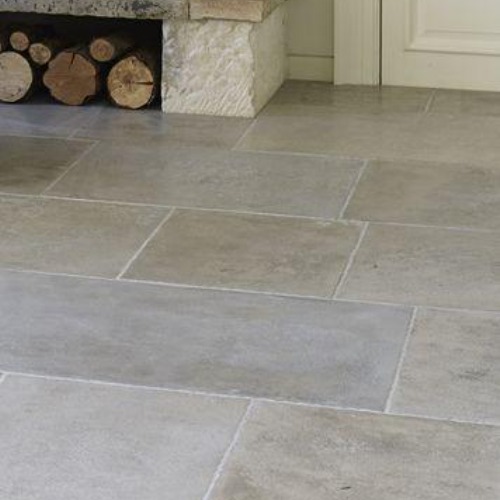
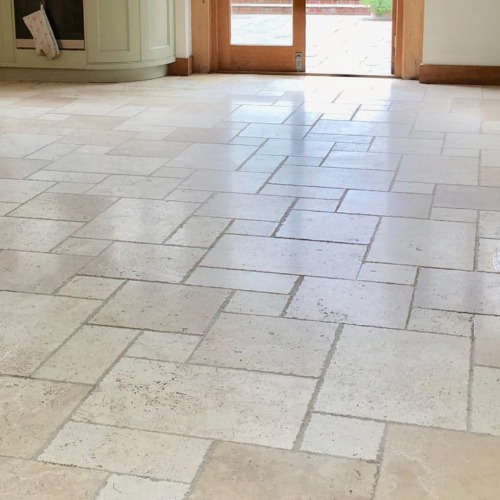
Travertine
Travertine is formed by the accumulation of calcite from hot springs and usually comes in a cream or reddish color. It’s signature texture, which features holes and pitting, is due to sulphur bubbles eating away at the stone over time. When used as flooring, these holes are often filled with synthetic resins or cements that may not polish very well. As a result, polished travertine can look inconsistent in appearance. The surface of travertine requires more maintenance when the holes are left un-filled (called cross cut). Classified as a limestone and a marble, some Travertines can be polished and others cannot. Travertine must be protected and maintained properly with neutral stone cleaning products.
Marble
Marble is created when limestone softens from heat and pressure then recrystallizes. Marble’s basic components are calcium and dolomite. This classification of stone comes in a broad range of colors and is often heavily veined – a highly prized quality that is actually a fault in the stone. Marble’s hardness rates from 2.5 to 5 on the Mohs Scale. Marble is extremely sensitive to acidic substances. It is very important to begin taking care of marble from the beginning with proper stone care products.
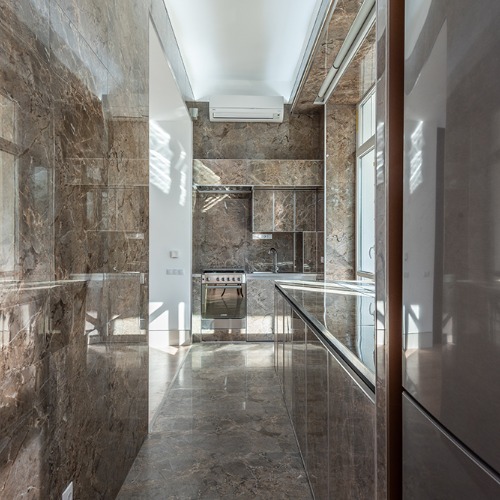

Slate
Slate is a fine-grained, metamorphic stone that forms from clay, sedimentary rock shale, and sometimes quartz. A quality that is common to slate is that it is very thin and can break easily. While homeowners and designers often choose slate in the signature black, grey, or green tones, many colors are available. Slate should always be sealed and maintained properly with neutral stone cleaning products. Color Enhancer can be applied to this surface to minimize the dry, scaled look that is slate’s natural appearance, while bringing out the vibrancy of the stone .
Granite
Granite is primarily made of Quartz (35%), Feldspar (45%) and Potassium. The stone has a heavy crystalline and granular appearance due to mineral grains. Granite is a very hard material and easier to maintain than marble. However, it is still porous and will stain. There are different types of granite, depending on the percentage of quartz, mica and feldspar in any given stone. Black granite is known as an Anorthosite. It contains very little quartz and feldspar and has a different composition than true granite. Fine grained granites are often more absorbent than others. All in all, this category of stone tends to be extremely durable. Granites should be sealed and maintained properly with neutral stone cleaning products. Unlike marble, granite is not sensitive to acid products.
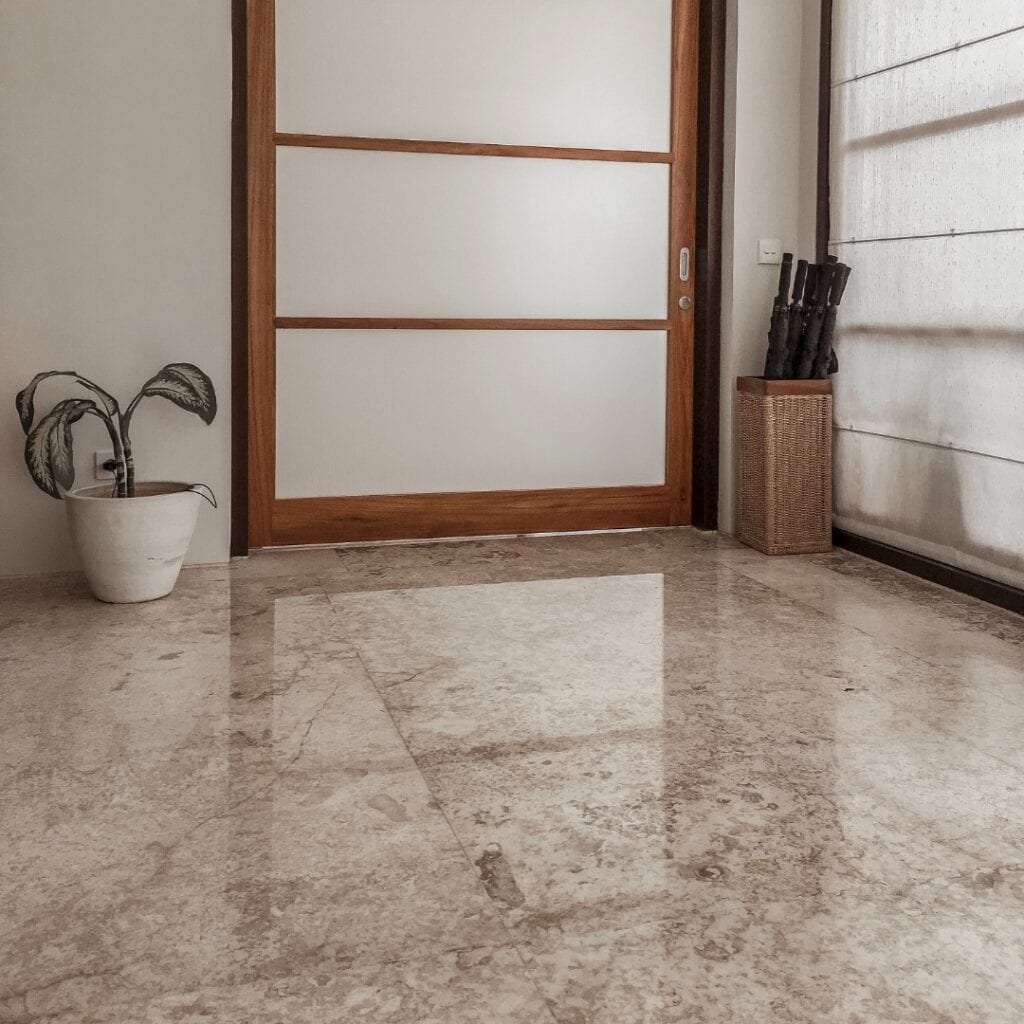
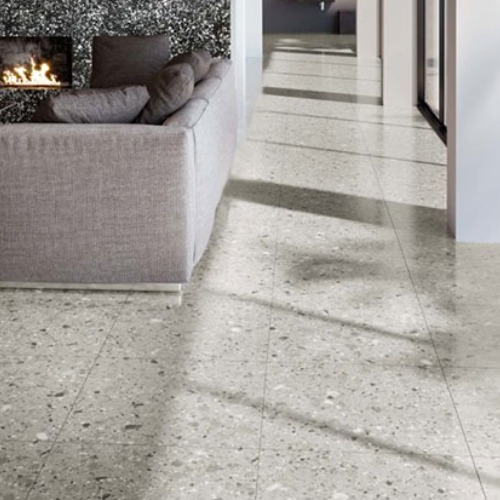
Terrazzo
Terrazzo is formed when marble and granite chips are embedded in a cement substrate. It is durable and easier to maintain than many natural stones. Terrazzo may not rival the beauty of natural stone surfaces but it provides a visual texture and color variety that suits many spaces. Terrazzo should be sealed and maintained properly with neutral stone cleaning products. Like marble, the surface of terrazzo can be honed and polished, using the proper methods.
Agglomerate or Conglomerate
Agglomerate or Conglomerate is formed when marble chips are embedded in a colored resin composition. It is a less expensive alternative to marble, which requires a thorough maintenance program. In most cases, this surface is not very absorbent; therefore, cleaning and maintenance is all that is necessary. Agglomerate or conglomerate should be sealed and maintained properly with neutral stone cleaning products. Both surfaces can be honed and polished using the proper methods.
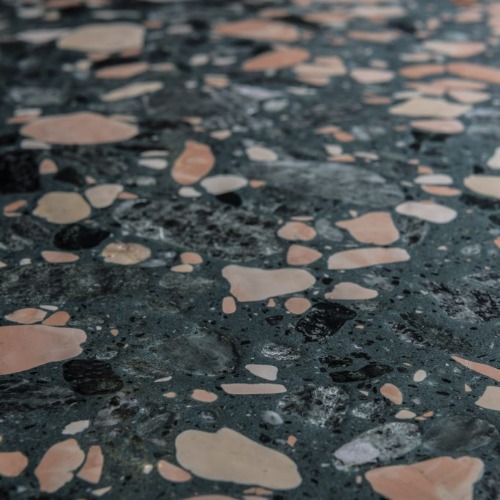
Basic Stone Care Tips
Stone Countertops
- Clean stone surfaces with a few drops of neutral (not acidic or alkaline) cleaning product. Alternatively, a stone soap (available at hardware stores or from your stone dealer) may be used effectively, or a mild liquid dishwashing detergent and warm water.
- Apply with a clean soft cloth for best results. Too much cleaner or soap may leave a film and cause streaks.
- Do not use products that contain lemon, vinegar, or other acids on marble or limestone.
- After washing the soap solution off, rinse the surface thoroughly and dry it with a soft cloth.
- Do not use scouring powders or creams; these products contain abrasives that may scratch the surface.
Stone Floors
- The first step for maintaining stone floors is to dust mop them frequently, using a clean, non- treated, dry dust mop.
- The purpose of regular mopping is to remove sand, dirt, and grit, which do the most damage to natural stone surfaces due to their abrasiveness.
- Mats or area rugs placed in entry areas will help to catch the sand, dirt, and grit that is most likely to scratch a stone floor.
- If a mat or rug is used, be sure that the underside of the item is a non-slip surface.
Stone Bathroom and Other Wet Areas
- Soap scum on stone surfaces can be minimized by using a squeegee after each shower and counter use.
- To remove this residue, use a non-acidic soap scum remover or a solution of ammonia and water (about 1/2 cup ammonia to a gallon of water).
- Be aware that frequent or over-use of an ammonia solution may eventually dull the surface of the stone.
*Note about Chelating Agents
This is an ingredient found in most store bought cleaners. It dissolves mineral deposits in hard water to allow the product to work easier and better. Since natural stone is made up of minerals, most store bought cleaners will eventually streak and dissolve any stone on which it is used.
